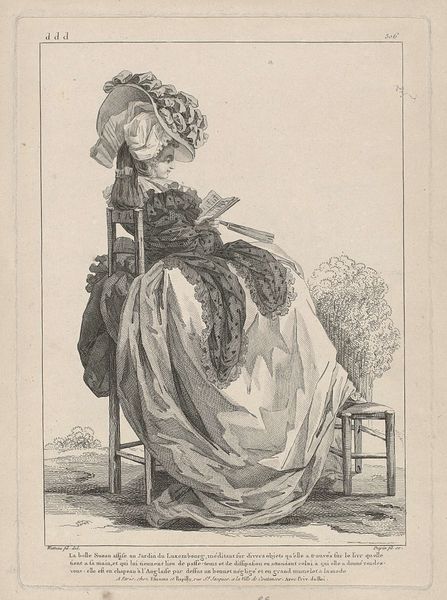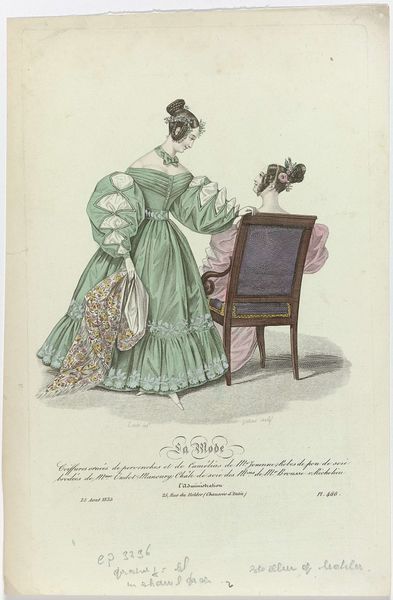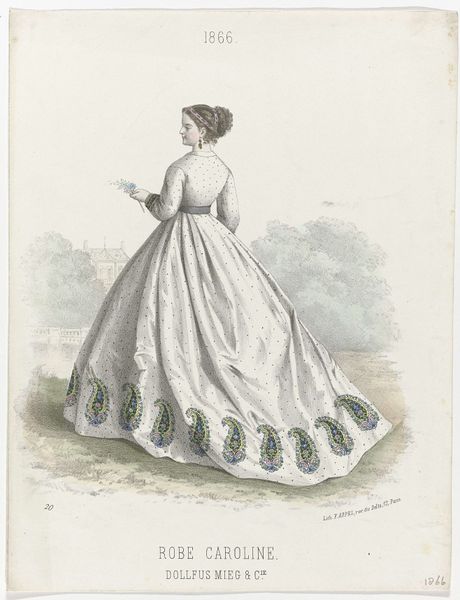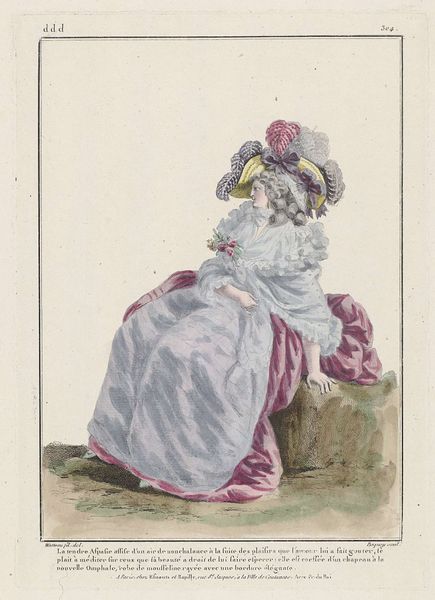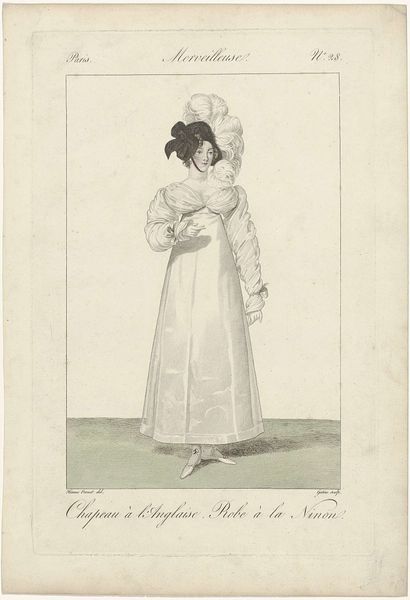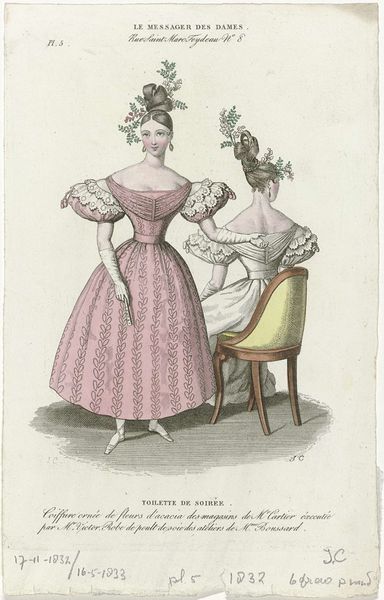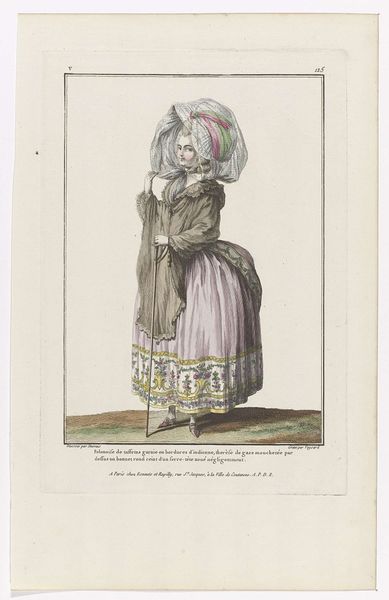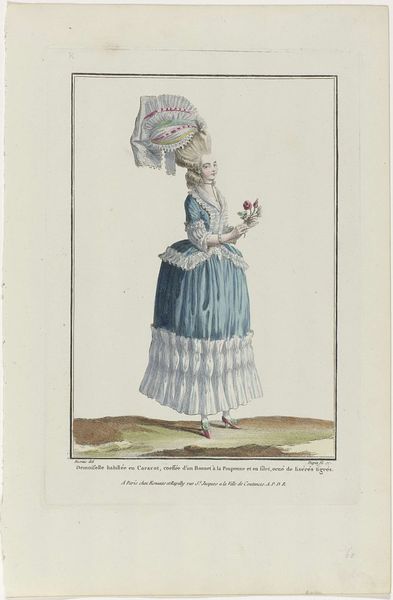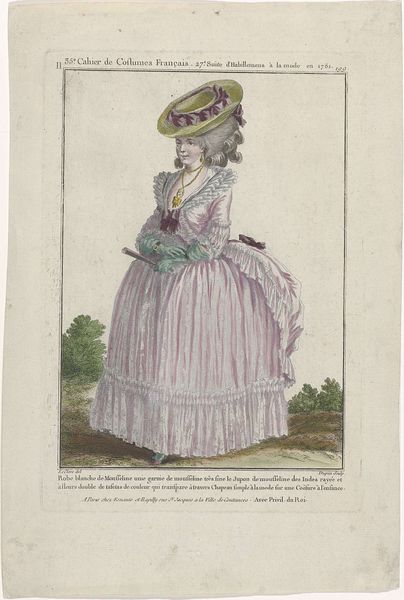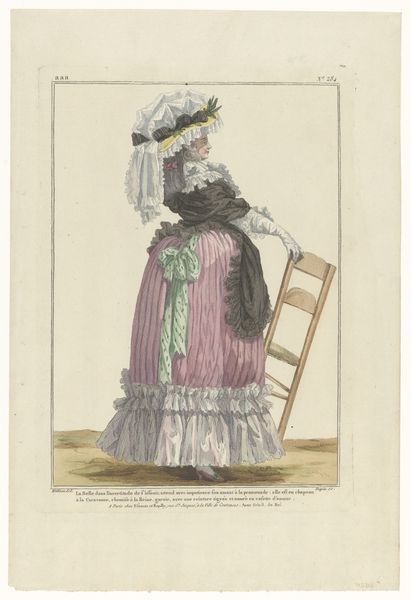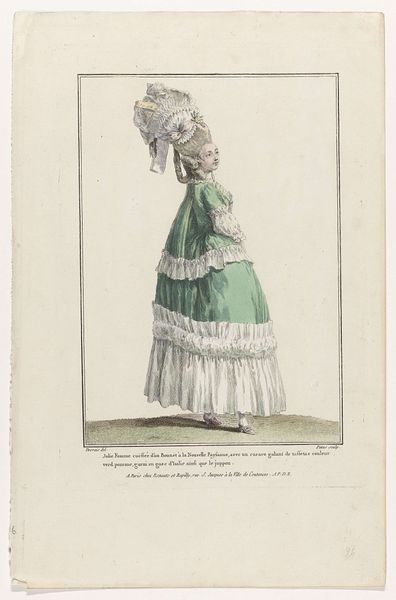
Gallerie des Modes et Costumes Français, 1784, && 278 : L'agaçante Finett (...) c. 1784
0:00
0:00
Dimensions: height 288 mm, width 205 mm
Copyright: Rijks Museum: Open Domain
Curator: Here we have a print titled "Gallerie des Modes et Costumes Français, 1784, & 278 : L'agaçante Finett (...)" created around 1784 by Nicolas Dupin. It's currently housed here at the Rijksmuseum. Editor: My goodness, she seems to be positively melting, draped like that over what appears to be a faux rock or, at least, something very hard. A study in languid excess! Curator: The print utilizes etching, typical for the period to disseminate fashion trends but elevating it to, arguably, social commentary. Notice the inscription below—emphasizing her attire is both audacious and alluring to potential suitors. This collapses the high art versus craft dichotomy quite effectively, placing value not only in aesthetic presentation but also in the economic motives surrounding clothing production and display. Editor: She definitely reads like a bit of a caricature! The towering hair ornament! And look at that sly little smirk she seems to be giving! The artist certainly captures the frivolous nature of some members of high society back then. She has no practical occupation at all beyond seeming "fetchinge." What a life, eh? Or rather, what a means of social production. Curator: Precisely. The etching, therefore, performs work, creating a desirable commodity – an ideal which reinforces existing power structures related to wealth, gender and taste during the late eighteenth century. Consider also the materials – the ink, paper, and metal plate were manufactured via particular labor practices. These details situate the artwork squarely within the context of growing pre-industrial economies and shifting societal values. Editor: And to think all those societal pressures culminated in such, dare I say, a theatrical image! The rococo style practically oozes from every detail. The woman herself strikes such a self-aware pose that one can't help but chuckle, I find it utterly charming. Although, perhaps 'charming' obscures the deeper point you made, given the exploitative nature of its origins. Curator: Precisely, it's never just “charming” is it? Editor: Point taken! All the same, thinking about the work through your materialistic framework has made her finery suddenly so much heavier, no longer delightful.
Comments
No comments
Be the first to comment and join the conversation on the ultimate creative platform.

